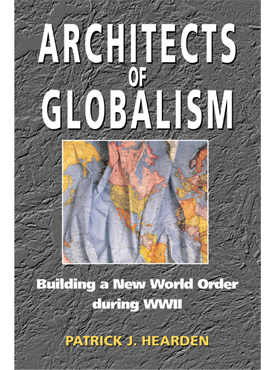Architects of Globalism provides the first comprehensive analysis of American Blueprints for the reconstruction of the world after the defeat of Hitler and his allies. Working closely with Roosevelt and Truman, State Department officials assumed primary responsibility for drafting these plans. Hearden shows that bitter rivalries frequently divided these officials, but that there was remarkable agreement among them on fundamental principles. These architects of globalism sought to create a liberal capitalist world system, in which foreign markets would absorb the surplus products of American farms and factories so that the United States would be able to maintain high levels of employment without further government intervention in the economy.
Hearden shows these men contending with the vital issues of the day: decolonization and the dismantling of empires, relations with the Soviet Union, the formation of the United Nations, the economic reconstruction of war-torn countries, the forging of new relations with Germany and Japan, the twin problems of Palestine and petroleum. Based on extensive new research in primary sources — from policymakers’ private letters and personal diaries to official correspondence — this exciting book documents the formation of the postwar world.

